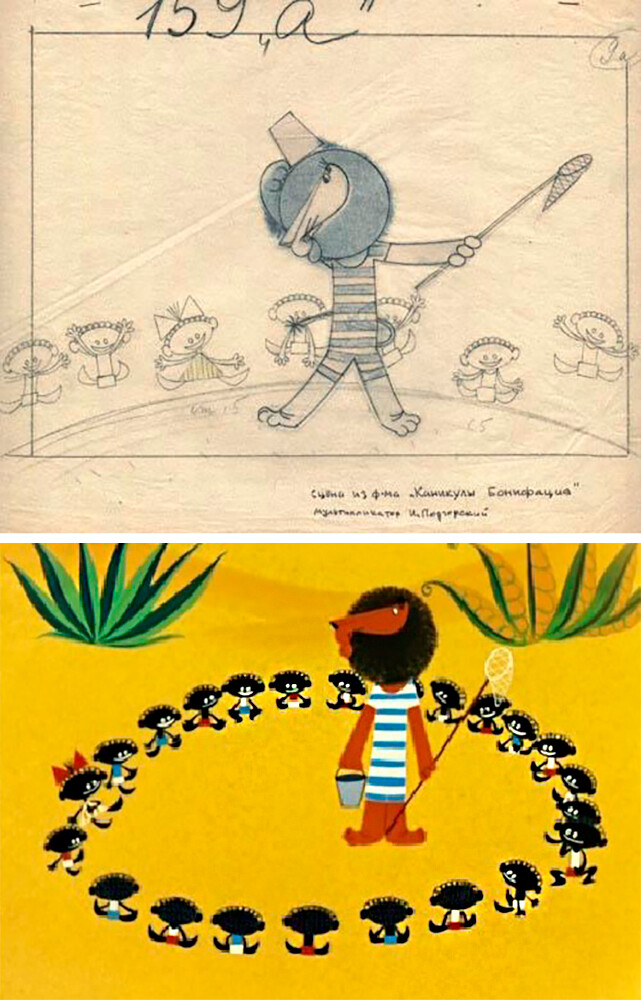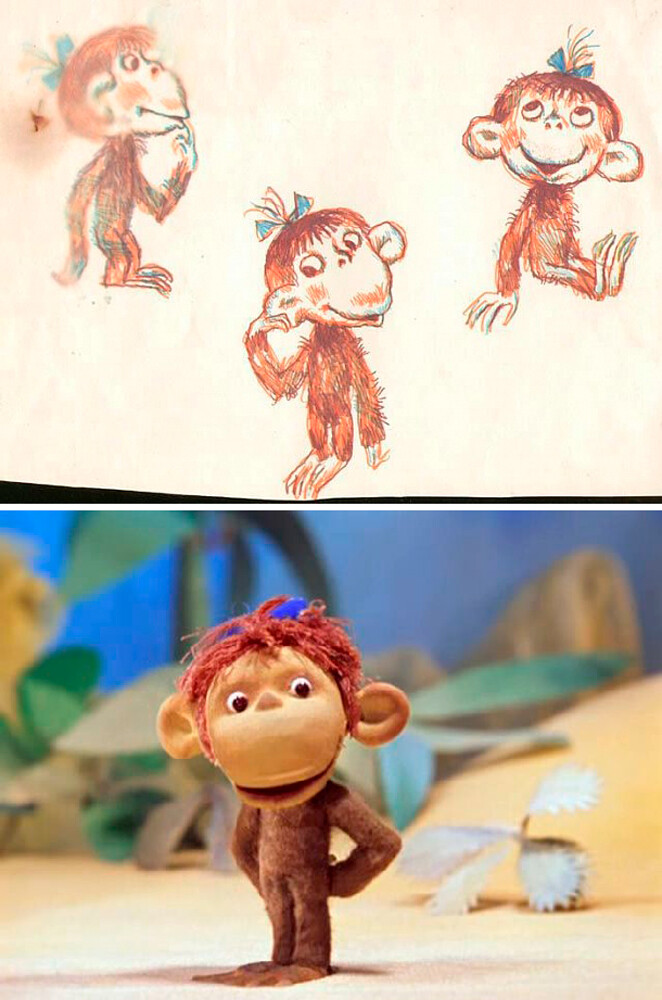
What did Soviet cartoon characters look like before their release on screen? (PICTURES)

‘The Snow Queen’ (1957, Lev Atamanov)
Famous Japanese director Hayao Miyazaki said that this Soviet adaptation of Hans Christian Andersen’s famous fairy tale of the same name showed him what he should strive for in animation.
This Soviet animation classic found fame not just in its homeland – this cartoon was regularly shown on TV during New Year holidays in the U.S. in the 1960s-1970s.


‘Cipollino’ (1961, Boris Dyozhkin)
Based on a fairy tale by Italian writer Gianni Rodari, this cartoon is simpler and shorter than its original. Screenwriter Mstislav Pashchenko planned to show the narrative of the fairy tale with all its details, but director Boris Dyozhkin insisted on some cuts. In the end, all the main events were present in the cartoon and the story was preserved – brave onion boy Cipollino and his friends save Cipollino’s unfairly convicted father from prison and begin a revolution.


‘Boniface's Holiday’ (1965, Fyodor Khitruk)
A fairy tale by Czech writer Miloš Macourek, ‘Boniface and his nephews’ became the basis for this cartoon. According to the plot, circus lion Boniface goes on a holiday to his grandma, but even on an island, local kids don’t let him rest.
Director Fyodor Khitruk said that the idea for this cartoon was discovered completely by chance: “Once, while clearing my desk for the next film crew, I found a couple of sheets of typewritten text in one of the drawers; before throwing them away, I read a couple of lines. I was captivated by a phrase said by the circus director: ‘Come to think of it, I’ve forgotten that lions also have grandmas!’”

‘Adventures of Mowgli’ (1967-1971, Roman Davydov)
A whole series of cartoons was created based on ‘The Jungle Book’ by Rudyard Kipling. Interestingly, in the Russian translation of the fairy tale, Bagheera was turned into a female and this “new” adaptation was preserved in the cartoon, as well.
During the creation of the cartoon, Roman Davydov forced the animators to get into character as animals. For those responsible for drawing Bagheera, he gave the task to observe cats at home.


‘Winnie-the-Pooh’ (1969-1972, Fyodor Khitruk)
The director didn’t see the American version of the cartoon, which allowed him to create his own interpretation of the fairy tale by Alan Milne. The Soviet cartoon doesn’t have Christopher Robin at all, the entire plot is concentrated around Winnie-the-Pooh and his friends. Khitruk believed that the boy only accentuated the toyish nature of the characters, while for the animation crew Milne’s fairy tale was ‘the world of Winnie-the-Pooh.’



‘Gena the Crocodile’, ‘Cheburashka’, ‘Shapoklyak’ (1961, 1971, 1983, Roman Kachanov)
These characters were invented by popular children’s writer Eduard Uspensky, who wrote the book ‘Gena the Crocodile and His Friends’ in 1966. Kachanov based his three cartoons on this story. By the way, the name ‘Cheburashka’ comes from the verb ‘cheburakhnutsya’, which means ‘to fall’. Uspensky heard this word while visiting his friend. Originally, Cheburashka was, indeed, someone who constantly falls over.
Surprisingly, the editorial board of ‘Soyuzmultfilm’ somehow saw political satire in children’s cartoons about friendship and kindness. The director was accused of ridiculing the construction of the Council for Mutual Economic Assistance in the first cartoon, ‘Gena the Crocodile’; the ‘Cheburashka’ episode, meanwhile, allegedly ridiculed the pioneer movement. Thankfully, the cartoons still managed to get a wide release; The Cheburashka character charmed the audience so much that it, over time, even became one of the unofficial symbols of Russia.

‘Film, Film, Film’ (1968, Fyodor Khitruk)
This satirical short animated film about the “inner workings” of filmmaking and the creative struggles of directors was invented by Khitruk, after he talked to director Viktor Shklovsky. The latter told Khitruk about how his films were banned, his initial ideas were twisted and, overall, what a mess he believed the Soviet movie industry to be in. But, in the end, he added with a smile on his face: “And that is our cinematographic happiness!”


‘38 Parrots’ (1976-1991, Ivan Ufimtsev)
This animated series consists of 10 cartoons about the friendship of the Elephant, the Chimp, the Boa and the Parrot. The plot often turns out to be completely absurd; for example, in the first episode, the friends try to measure the length of the Boa in “Parrots”. They figure out that the length of the Boa is 2 Elephants, 5 Chimps or 38 Parrots. However, in the end, such an approach from the creators of the cartoon turned out to be very successful.
Some believe that the animators intentionally demonstrated four types of temperament according to Hippocrates with their characters: the Boa is a melancholic, the Elephant is a phlegmatic, the Chimp is a choleric, while the Parrot is a sanguine. The real life prototype of the latter, by the way, was Lenin.


‘The Return of the Prodigal Parrot’ (1984, Valentin Karavaev)
Once, Valentin Karavaev was walking the streets of Moscow, when he saw a flock of sparrows, in the middle of which stood a parrot, as if “saying” something to the assembled crowd of birds. He began to think – where could a parrot have come from on a Moscow street? Perhaps it had escaped its owners? And that’s how the idea for the cartoon was born.
According to the plot, a parrot named Kesha lives with a boy named Vova. But, Kesha has a nasty character; he always quarrels with his owner and never listens to him. The bird regularly flies away from his home and gets into all kinds of mischief, but always returns and makes peace with Vova.














